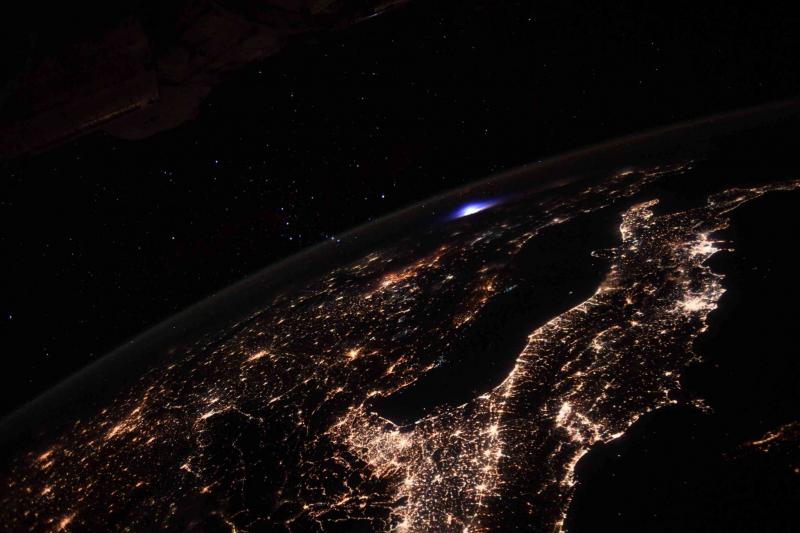French astronaut Thomas Pesquet captured a unique scene of a bright blue flash in the upper layers of Earth's atmosphere above Europe. The image taken from an altitude of 400 km shows the flash resembling a cobalt bomb exploding over Europe, but this frightening-looking blue light caused no harm. In fact, most people did not notice it happening at all.
The phenomenon is known as a "transient luminous event," a lightning-like phenomenon that strikes upward in the upper atmosphere. The French astronaut with the European Space Agency, currently residing at the International Space Station, stated, "The transient luminous event may sound like a euphemism for a ghost, but it is actually a beautiful phenomenon that can sometimes be seen from the International Space Station," according to Russia Today.
Transient luminous events occur due to ionized lightning in the upper atmosphere. This phenomenon took place in early September, but Pesquet revealed it on October 8, describing it as "extremely rare." "Blue jets" happen in the stratosphere below and are emitted by lightning. If the lighting propagates through the negatively charged upper region of thunderstorm clouds before passing through the positively charged region below, the lightning strikes upward, igniting a blue glow from molecular nitrogen.
These events are particularly difficult to photograph from the ground as they are very high in the sky and are regularly obscured by storm clouds. Additionally, this phenomenon typically lasts only for parts of a second or for a few seconds at a time.




